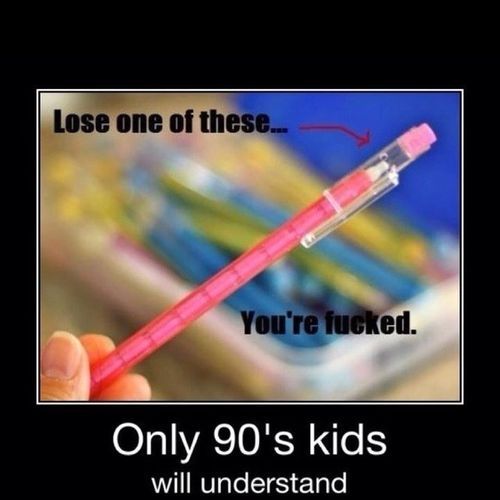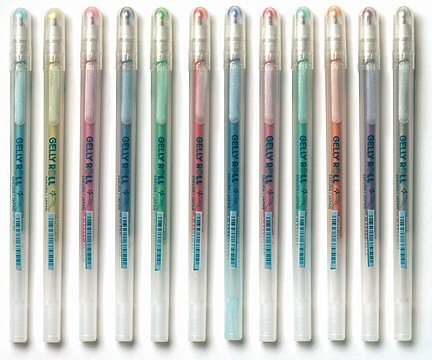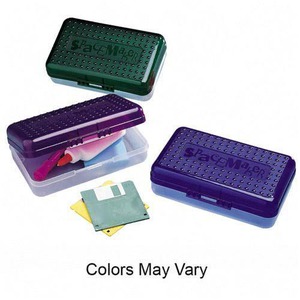This week, as millions of children across the
country go back to school, I thought it might be fun to revisit some of the
most essential school supplies of the Golden Age.
Notebooks,
Folders & Binders
In the Golden
Age, organization started and ended with the Trapper Keeper. It was the one stop shop for all of your
folders, notes and paper assignments.
The Trapper was great once you got to middle school or high school
because you didn’t have to remember which classes had homework (and therefore
required you to bring home the notes) and which didn’t—just keep everything in
your Trapper and throw that in your bookbag at the end of the day.
In the '90s
Trappers started to feature some futuristic and psychedelic cover designs. Like just about everything else in that
decade, bold and vibrant colors were essential.
The Trapper was more than just a useful school supply, but a way to
express yourself.
Even Aunt Beckie
from Full House loved them!
Like Trappers,
folders were a popular way to show off a favorite team, character or something
else personally significant. And also
like Trappers, they came in a variety of bright colors and designs. Particularly
popular among the female crowd in the ‘90s were folders and notebooks featuring
the artwork of Lisa Frank. Frank’s
products and artwork were easily identifiable by their bright neon and rainbow
colors. They generally featured
female-favorite animals, including unicorns, puppies and dolphins. Eventually Frank diversified away from
folders and stationary products into related goods like pencils, stickers and
lunchboxes. Lisa Frank products were
certainly girly, but I have to admit that the bright, vivid colors were quite
sharp and distinctly ‘90s.
Writing Utensils
Of course in
order to write in all these nifty notebooks and binders, we needed some writing
utensils. Like most everything else in the
Golden Age, the loud and vibrant were preferred over the mundane. The ultra-flashy Yikes! pencils became popular
in the 90’s, featuring bright colors and sometimes holographic designs. When you sharpened the pencil, the wood
portion was dyed a different color, giving the pencil a louder, multi-colored
look. It’s pretty rare to see a
successful branding campaign for a product as cheap and commoditized as
pencils, but Yikes! was able to pull it off in the ‘90s.
Popular with many girls was the push-up style pencil, where instead of sharpening it down, you removed the top piece, put it in the bottom and pushed up a new sharp piece. Of course, if you lost one of the pieces, you were done for.
Pencil grips, or
“grippers” as many kids called them, were also a popular accessory. Even though the gripper theoretically should
have been a stigma, since you generally only got one if you weren’t holding
your writing utensil properly and needed a device to help you correct that, it
was instead viewed by most kids as a cool way of jazzing up otherwise boring
pencils. The triangular prism gripper
was common in the early years, but seemed to give way to a smaller, gel-ier
style of gripper as the years went on.
As we got a
little older and our teachers gave us the go-ahead to move from pencil to pen,
we had a wide array of new directions to go in for our writing needs. One trend that emerged among '90s girls was gel pens. Structurally
similar to a regular pen, gel pens were distinct for suspending their ink in a
water-based gel which was usually visible through a clear pen barrel. Gel pens came in a variety of colors and were
almost never confined to the standard black and blue. Colors like mint green, pink, lavender and
sky blue were favorites.
Of course to
carry all of these spiffy writing utensils, we needed some sort of case. Soft pencil cases were popular, but in the
‘90s Spacemaker pencil boxes managed to overtake them. I tend to think that the pencil box was good
if you had a desk to store everything in, or if you were using itat home. If you were trying to carry it from class to
class, it was a little too big and cumbersome.
But it certainly caught on, as most Golden Agers seem to have a clear
recollection of the Spacemaker box.
Crayons &
Markers
The standard
bearer for crayons in the Golden Age was the Crayola 64 box. Everybody knew that you couldn’t REALLY draw a good picture with an 8 or
10 pack. The full compliment of 64
colors was essential. Crayola really
outdid themselves when they installed a sharpener right into the back of the
box. If your crayon was getting a little
bit dull, all you had to do was peel back the paper a bit, sharpen ‘er up, and
you were back in business. I have no
recollection at all of where the shavings went.
In the early
1990s, in conjunction with the release of their colossal 96-crayon “Big Box”,
Crayola decided to introduce some new colors to the world in a way that only
they could. 16 new fluorescent crayons
were added, and a contest was started to name these brand new colors. As best I can tell, this contest actually ran
for over a year, with the winners being announced in 1993. Some of the new color names included “Robin’s
Egg Blue”, “Macaroni and Cheese”, “Timber Wolf” and “Razzmatazz”. Congratulations Golden Agers, these were your
contributions to the world of color. For
a full list of the winners and a really neat history of Crayola through the
years, check out CrayonCollecting.Com.
 As we got older,
it became clear that crayons were for little kids, and if you really wanted a
vibrantly-colored picture, you had to go with markers. Crayola again was the market leader, and
their standard 8 pack was usually enough to whip up something “fridge-worthy”
in Art class. But Crayola rocked the
marker world in the ‘90s when they invented “Changeables”. You could write in one color, then a few
seconds later you could rub a clear “magic wand” marker over some portion, and
the places that were wanded would change to a totally different color. It might seem ho-hum now, but in the early
As we got older,
it became clear that crayons were for little kids, and if you really wanted a
vibrantly-colored picture, you had to go with markers. Crayola again was the market leader, and
their standard 8 pack was usually enough to whip up something “fridge-worthy”
in Art class. But Crayola rocked the
marker world in the ‘90s when they invented “Changeables”. You could write in one color, then a few
seconds later you could rub a clear “magic wand” marker over some portion, and
the places that were wanded would change to a totally different color. It might seem ho-hum now, but in the early
90’s this literally seemed like magic and was pretty much the coolest thing
ever. A short time later, Crayola
introduced a cousin to the Changeable—the Overwriter. You could write something in a dark
color—say, black--then write on top of it with a lighter color, and it would
actually show up! Again, mind-blowing in
its time. Some nice girls on YouTube
provide a little demonstration to jog your memory.
But Crayola
wasn’t the only marker maker in town.
Who could forget the scented goodness of Mr. Sketch brand markers? Each marker had a distinct scent that usually
smelled like a food item of the same color.
The complete list was:
- Red: Cherry
- Orange: Orange
- Yellow: Lemon
- Green: Mint
- Dark Green: Apple
- Light Blue: Mango
- Blue: Blueberry
- Purple: Grape
- Pink: Melon
- Magenta: Raspberry
- Black: Licorice
- Brown: Cinnamon
I was partial to
the citrusy yellow and orange myself, but most all of them were pretty
terrific. Mr. Sketch markers were also a
particular shape that made them easy to connect to each other, which was great
for building a marker-tower or a marker-sword—you know, if you were so
inclined. All these years later you can
still grab a 12-pack of Mr. Sketch on Amazon for less than $7, if you want to
make a picture for your mom, build her a marker tower, or just sniff them
“sketchily” while she looks on with concern.
Lunchboxes
And finally, who
could forget the lunchbox, probably the most fun item to select on your back to
school shopping trip. It was (at least)
a year-long commitment, so you had to choose carefully. Being a huge Ninja Turtles guy, they were my
lunchbox of choice (me and a few million other kids my age). My big sister, on the other hand, opted for
New Kids on the Block. There were so
many great lunchbox designs in the Golden Age that you almost couldn’t go
wrong.
What were your favorite school supplies in the 80’s and 90’s? Which are kids still using and which have been forgotten by time? Tweet us @GoldenAge4Kids or drop us a comment. As always, a big thank you to those whose old photos we've borrowed for this entry.






















